A National Trust for Scotland Christmas Carol
‘A Christmas Carol’ by Charles Dickens is one of the most enduring and well-known Christmas stories. As well as containing a moral message, it reminds us of the joy to be found in friendship, kindness and generosity, and is responsible for influencing the way we celebrate Christmas today.
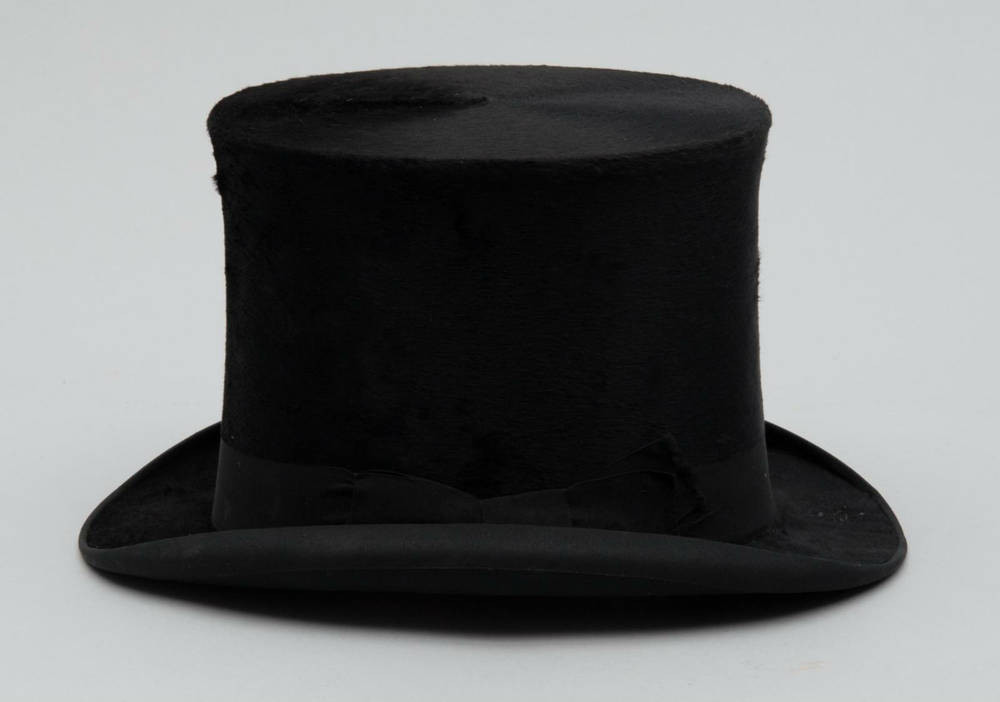
Black top hat (The Georgian House)
The book was published on 19 December 1843 and was an immediate success. By Christmas Eve, every copy had been sold and charitable giving soared. Its popularity has continued over the years; the story has been adapted on stage and screen many times and the book has never been out of print.
The story focuses on the bitter, cold-hearted and miserly Ebenezer Scrooge, who receives four visitations on Christmas Eve by a succession of ghosts. These chilling visits show Scrooge the error of his ways and transform him overnight into the epitome of the Christmas spirit!
Scrooge’s joyless term ‘bah humbug’ is still used widely today to refer to those who reject the merriment of the festive season.
‘The cold within him froze his old features, nipped his pointed nose, shrivelled his cheek, stiffened his gait, made his eyes red … He carried his own low temperature always about with him.’ (A Christmas Carol)
While shuffling through the smog-filled, biting-cold, poverty-stricken streets of Victorian London on Christmas Eve, Scrooge wouldn’t be complete without a top hat and a gnarly old walking cane.

Wooden walking cane, c1870 (Falkland Palace)
In Scrooge’s counting house on Christmas Eve, his long-suffering and poorly paid clerk Bob Cratchit makes a pitiful attempt to warm himself by a candle as Scrooge won’t allow him to have a decent fire.
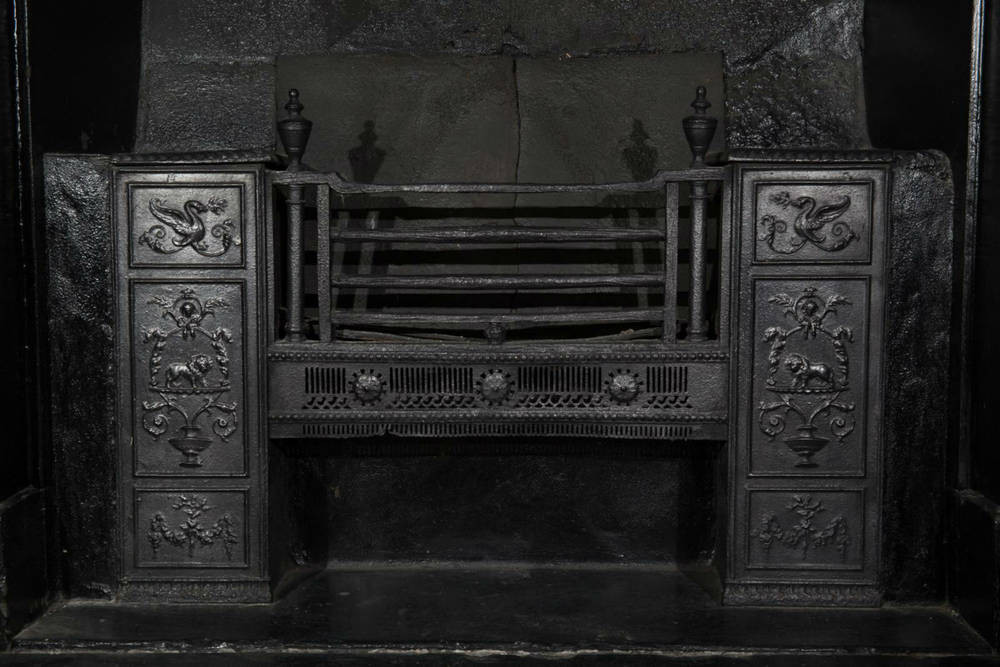
Black iron fire grate, c1800 (Culross Palace)
‘Oh! But he was a tight-fisted hand at the grind-stone, Scrooge! a squeezing, wrenching, grasping, scraping, clutching, covetous, old sinner!’ (A Christmas Carol)
As Scrooge devotes his life to work, amassing wealth and counting his money, he misses out on the joys of family and friendship

Mahogany oval desk, c1870 (Falkland Palace)
‘every idiot who goes about with “Merry Christmas” on his lips, should be boiled with his own pudding, and buried with a stake of holly through his heart. He should!’ (A Christmas Carol)
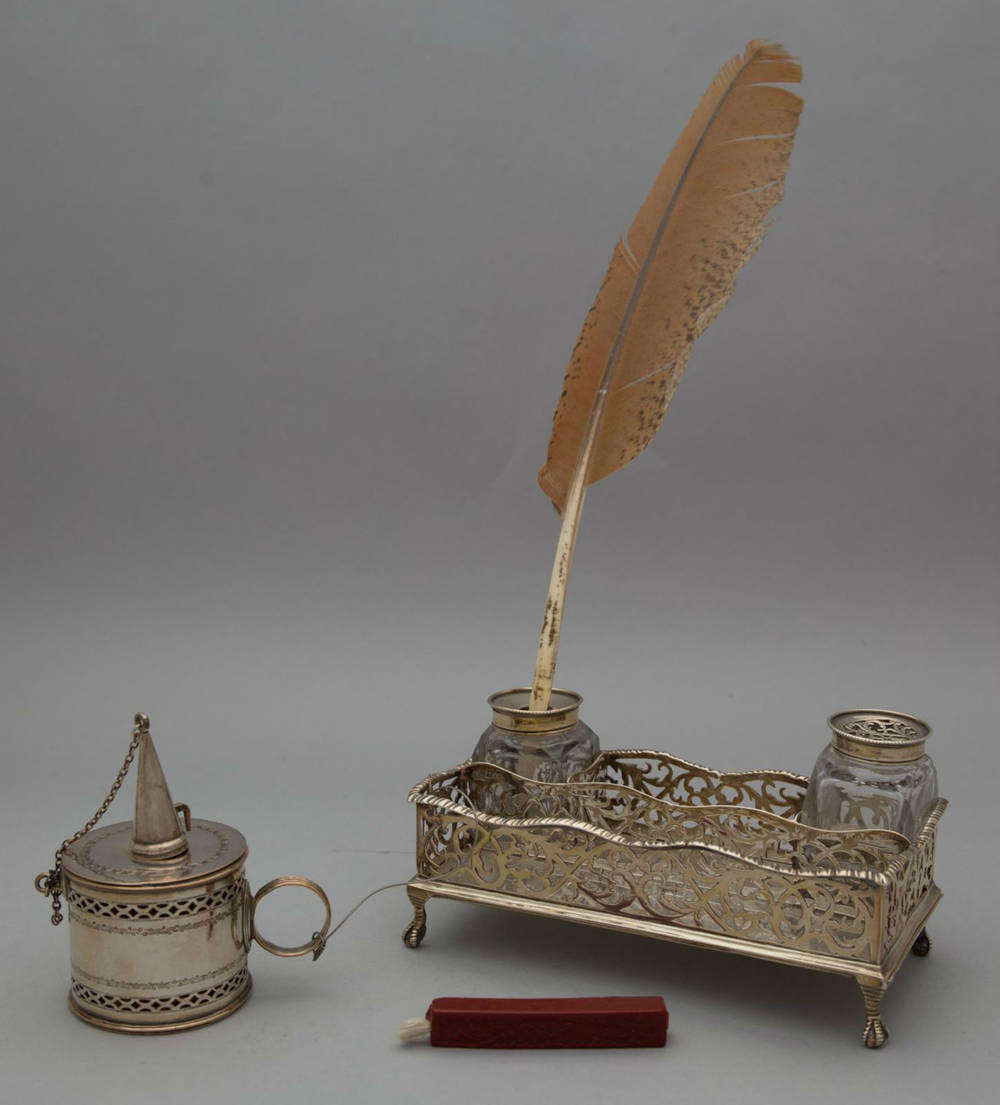
Silver ink stand and quill, c1765 (The Georgian House)
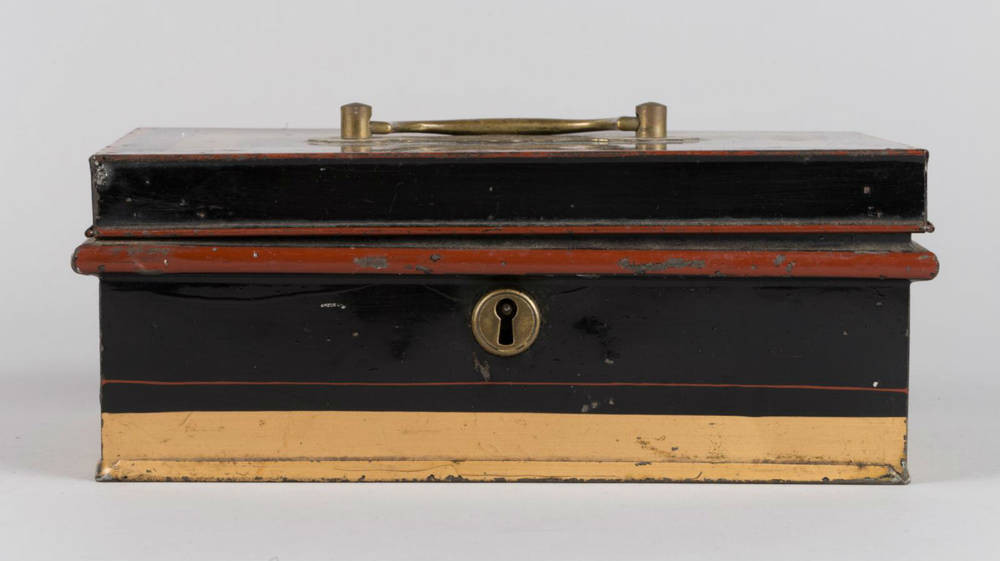
Black enamelled money box (Robert Smail’s Printing Works)
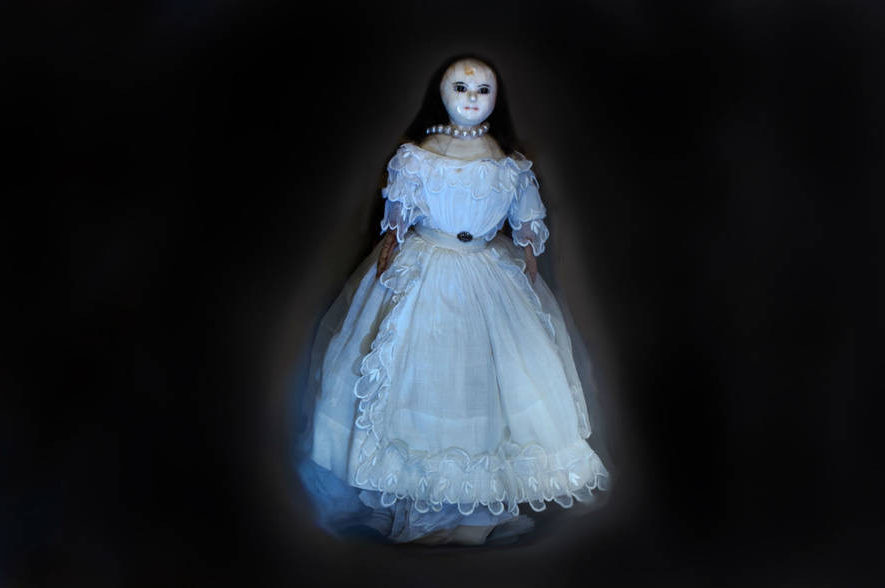
Doll wearing muslin dress c1860 (Angus Folk Museum)
In Scrooge’s cold, dark apartment on Christmas Eve, the Ghost of Christmas Past is the first of the three Christmas spirits to visit Scrooge. Described as a ‘strange childlike phantom’, it escorts Scrooge on a journey into the past to previous Christmases and happier times.
When Scrooge awakens on Christmas Day he is a changed man. Delighted to find he has a chance to repent his miserly ways, he vows to treat everyone with kindness, generosity and compassion, embodying the spirit of Christmas.
After buying the biggest turkey he can find for the Cratchits, Scrooge attends his nephew’s Christmas party where the Christmas dinner table is ‘spread out in great array’ and ‘Nothing could be heartier’.

The kitchen in the Georgian House decorated for Christmas, including a large oval Sheffield plate dish cover, c1830

The kitchen in the Georgian House decorated for Christmas
Scrooge considers his time spent with family members on Christmas day, and exclaims, ‘wonderful party wonderful games, wonderful unanimity, won-der-ful happiness!’ He realises that wealth is best used to make others happy and that happiness comes from people and friendship.
‘There is nothing in the world so irresistibly contagious as laughter and good humour.’ (A Christmas Carol)
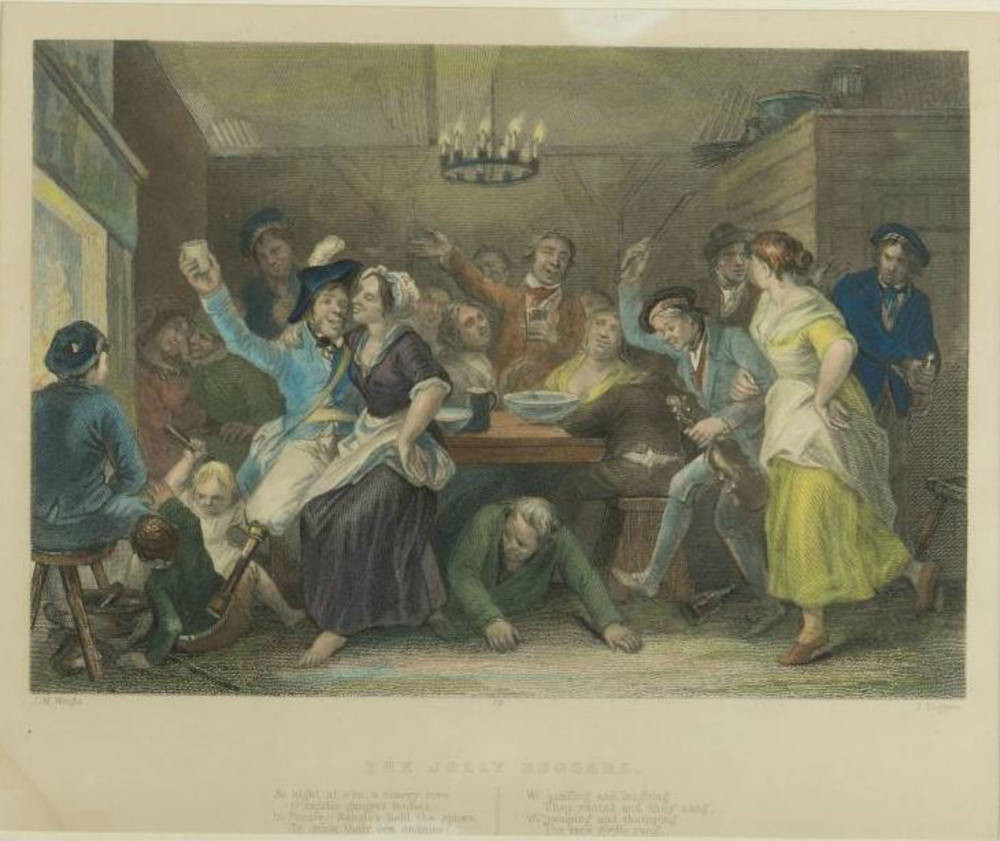
Tinted engraving inspired by Burns’s poem, The Jolly Beggars, c1800 (Robert Burns Birthplace Museum)
We wish you all a happy, healthy and peaceful Christmas!
This article is by Alison Thomas of the Project Reveal Team. Project Reveal is a multi-site digitization project of unprecedented scale. It will result in an updated database with high quality images and unique object numbers for every item in the Trust material culture collections. Six regionally based project teams, supported by experienced project managers, are working across all our properties with collections to complete the inventory in 24 months from July 2017 until July 2019.
With your support, we can help the Trust manage its collections more effectively. Most important, we can help the Trust discover, better understand, and share its treasures with the world.

